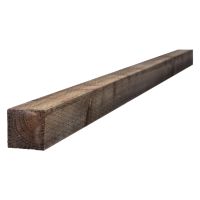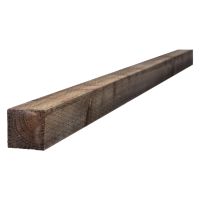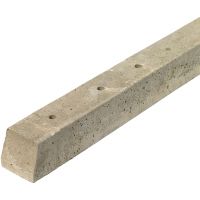Fence Posts
More information about Fence Posts
Fence posts are an essential part of any fencing project, and often come in a variety of heights, widths and materials. Whether you’re looking for concrete fence posts or wooden fence posts, we’ve got a great variety to choose from at Selco.
What types of fence posts do we have available?
Give your fence panels the support they need with our range of fence posts that are sure to stand the test of time. Fence posts are used in between fence panels to act as the backbone of the structure and help create a neat, sturdy perimeter for your outdoor space.
Wooden fence posts
Our wooden fencing posts have been treated to give them further strength and durability, and are also incised, meaning they are machined with multiple small incisions to allow the preservative treatment to absorb deeper into the wood giving a minimum 15-year life span and a UC4 classification. Making them Use Class 4 means they are suitable for ground contact. As they’re an important part of any fencing job, we make sure our timber fence posts are hard-wearing and protected against the elements.
Concrete fence posts
Although wooden fence posts are a great choice if you want them to blend seamlessly with your fence panels, we also offer a few concrete fence posts. Concrete is a stronger and sturdier alternative to timber and can’t be penetrated by rot or insects. Many customers opt for concrete posts over timber posts in areas especially affected by wind or storms. We also have concrete corner fence posts for connecting fence panels together and creating corners around the garden.
Our range of fence arris rails
Arris rails are triangular-shaped pieces of timber used to construct closeboard or feather edge fence panels - they are secured to fence posts and run across the back of the panels to help support them and keep them secure and steady. Our choice of durable arris rail fencing is treated to keep them long-lasting and to protect against all weather conditions.
Get your fence posts and other fence supplies at exclusive trade prices
Our choice of timber fence posts and arris rails are from certified sources, meaning they’re sustainably sourced from responsibly managed forests.
You can have your fence posts and other fencing materials sent straight to your site with our free Click & Deliver service or save time and pick up at your local branch using our Click & Collect service.
FAQs
When installing your fencing, first work out how many fence panels you’re going to need by measuring the width of a panel against the fence line you want to create. You’ll need one fence post per panel, plus one extra to go at the end of the fence run.
The general guide is to make sure between 1/3 and ½ of your fence post is underground to ensure its stability and strength when holding the panels together. It does depend on the type of fence you’re using, though – a decorative fence panel might need less depth than perimeter/privacy fencing.
Dig a hole around one side of the fence post’s concrete base using a shovel, creating a semi-circle gap between the concrete and soil. You can then either wiggle the post back and forth to break the concrete away from the ground and lift it out, or you can break up the concrete using a bar or breaker.
The typical spacing between standard fence posts is between 6ft and 8ft. A privacy or security fence will need to be stronger and sturdier, so it’ll require closer post placement, whereas a decorative garden fence can have fence posts placed farther apart.
It can be a little tricky, but you can drill into concrete fence posts. Use a hammer drill with a masonry drill bit that is an appropriate size for the hole you wish to drill.
You can paint your concrete fence posts to match the surrounding garden area or even blend in with the colour of your fence panels. Make sure to choose a paint that is specifically designed for use on masonry and concrete to ensure a great finish that will last through the years.










